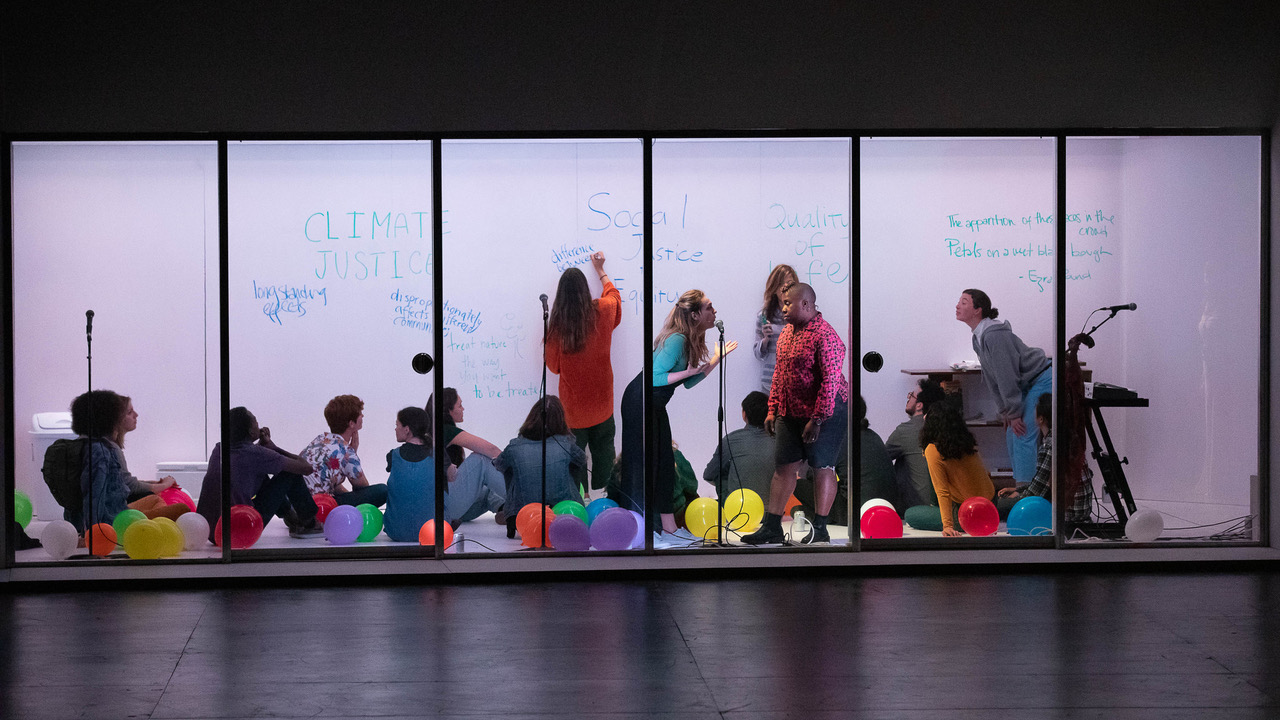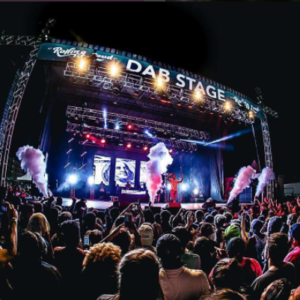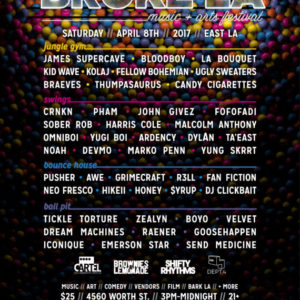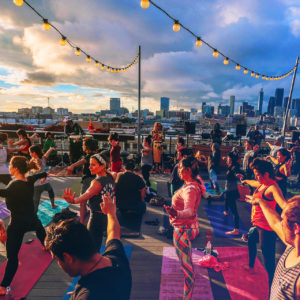 View Winners →
View Winners → 

Reed Hutchinson/CAP UCLA
“The more things change, the more they stay the same.”
I wonder if Jean-Baptiste Alphonse Karr knew that when he coined the phrase (originally the French “plus ça change, plus c’est la même chose”), it would stick around this long. And continue to be this relevant.
It sure seemed to be the case April 6th at UCLA’s Freud Playhouse after the conclusion of Lars Jan’s production of The White Album, as one attendee used the quote directly in her reflection during a post-show forum with the director and audiences.
Audiences, as in the inner and outer audience. Terminology coined for the volunteers on stage, who are just as much observing and having their own experience as they are participating on the set. This is one of the many experimental elements Jan has used to embody the fascinating expanse of time and place reimagined.
LJan brings his multi-media production of Joan Didion’s title essay from The White Album to Los Angeles in its second showing since premiering at the Brooklyn Academy of Music for the Next Wave Festival in 2018. In many ways, it is a bit of a homecoming, as the bulk of the setting takes place at Didion’s home on Franklin Avenue from 1966-1971, a marvel in itself that can still be visited today.
https://www.instagram.com/p/BvxzbvZg6Yc/?utm_source=ig_share_sheet&igshid=ift7ku0w9aqc
Narrating the entire work, from memory, and collaborating in the production is actress Mia Barron, who leads the essay through effortlessly. Barron thrives as the omniscient narrator, inserting Didion’s voice throughout, figuratively as well as literally with the other castmates. When asked how she felt taking on Didion’s formidable voice during such a distinct period, Barron reflected, nodding to today’s similarities:
“Her authorial voice, brilliance, power of observation – that’s timeless… the link between the huge cultural shift to sense of the world massively changing… the fear of not knowing what will come of that, and the disorientation of how we arrive at this mess we’re in.”
There was much anticipation in bringing The White Album home to the west coast, but also the hometown of Didion during the essay. Having seen Didion’s legacy over the last few decades, Barron says it’s “fascinating to be speaking these words from the epicenter of where it was written.”
The set is at once a replica of Didion’s Franklin home and yet a symbol of the detachment in her tone throughout the essay despite the dramatic events unfolding. The pigeon-hole effect further emphasizes the detached delivery Barron gives of the seemingly disaffected writer, even when she speaks of her personal struggles with health, including her diagnosis of multiple sclerosis.
Though partners in their personal lives, this is the first time Jan and Barron have collaborated on a project, with The White Album four years in the making. Barron noted that it was a long, arduous journey of finding a venue and design team that was up to the “massively complicated” vision in mind.

Reed Hutchinson/CAP UCLA
The payoff was immense, however, once it was finally executed. The technical and artistic elements at play, from the lights and visual effects to the quality and simplicity of the set, are stunning, a sort of cosmic blend of order and chaos. The psychedelic elements are necessary, but not too much to take away and sensationalize an era that is already stereotyped in many ways with drugs, music, and the free love, “hippie” revolution.
As Barron speaks in front of the audience, the set transitions as if a tide, working props in and out fluidly. The inner audience as multi-tools, they shift around effortlessly as her delivery. Barron maintains Didion’s use of section numbers from the essay and, with the subtle changes on stage, the jumps of time and place are evident. Every word within every number is recited as if Barron’s own thoughts and feelings, at times as if the setting were present day. This is only further emphasized by the eerie parallel of societal themes during The White Album that are still relevant across the nation today, from protests on education, to gun control and finally racial and gender equality.
The inner audience is mainly young people in their twenties, students akin to the students during the essay’s protests. It creates an interesting generational dynamic, with the legacy of the sixties and how it is perceived now alongside the potential of the youth coming up today. Despite the jarring moments of the outer and inner audience, there is an overall sense of intimacy and significance, particularly on stage with the other actors involved in the production.
https://www.instagram.com/p/Bv4cS3Hgzxc/?utm_source=ig_share_sheet&igshid=l5ok1w5fbe8m
Leading the actors is Andrew Schneider, who, like nearly everyone involved in this intimate production, had many other roles, including lighting design. From Jim Morrison to a cop at Berkeley, Schneider’s many portrayals were distinct and mesmerizing. Alongside is Madeline Barasch, Brittany Engel-Adams, Stephanie Regina, and Sharon Udoh, who are not only the commanding woman that drive the play forward, but also are incredible artists in their own rights, thriving in dance, comedy, music, and of course theatre. Through the dynamic, immersive performances, Didion’s work finds new life as well as a new, younger audience.
Nearing the end, the inner audience suddenly leaves the stage, quietly seating themselves among the outer audience. Lars Jan took what at once was such a divisive time in U.S. history and unpacked it so that by the time line of the inner audience and outer audience was blurred, the line between present and past was as well, igniting a flurry of exciting discussion for the post-show forum.
As Jan announced the commencement of the discussion, the set began its purge, with the clean-up crew silently hosting their own sort of show in the background of the actors seated on stage, with the inner audience rejoining them.
https://www.instagram.com/p/Bv5vXIMgWlK/?utm_source=ig_share_sheet&igshid=1nys4kydasu45
The juxtaposition of the younger and older spectators created a palpable, touching reflection. There was a mutual respect and optimism that, despite some of the less-ideal current events and feelings, was shared by everyone. A college professor in the outer audience summarized it perfectly as she shared:
“I feel my students are exhibiting much of the same idealism, passion, and commitment that my generation had in ’68… there’s so much happening now that seems similar to that period in the late sixties…”
As if jumping from a reflection of her own generation, to speaking to a younger version of herself, she continued, “I think the thing is to keep the fire in the belly, the passion, the idealism for change, and work on yourself. Not to let yourself get pulled down by what seems to be the reality around us, as another reality is emerging.”
Maybe there is some truth to Karr’s notable quotation, but Joan Didion’s vision still holds precedent, even with the opening line of The White Album. And Lars Jan’s mission of bringing this essay to life became the absolute personification of that sentence.
“We tell ourselves stories to live.”
While the weekend run at UCLA is now over, those interested can expect The White Album at residencies near and far in the future.











































































































